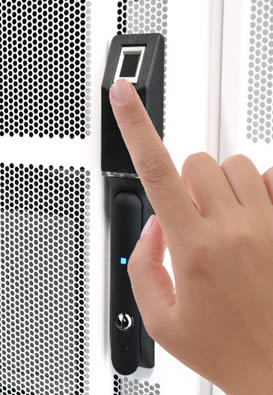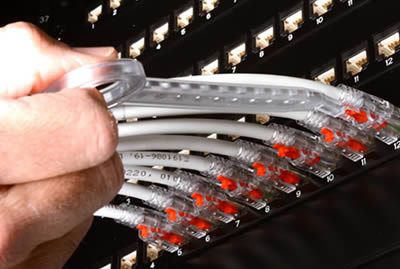When it comes to protecting the network, we hear a lot about firewalls, virus protection, encryption and other cybersecurity measures. While preventing digital attacks is critical in today’s digital world, data center and network managers also need to ensure that the network is physically secure.
With physical access to the network, anyone can accidentally or intentionally disconnect mission-critical networking equipment or connected devices. Sophisticated criminals could also gain access to unprotected spaces and connections for the purposes of carrying out cyberattacks or installing malware, viruses or ransomware. Let’s look at some of the various ways to physically protect the network.
Secure the Network Spaces
Switches, servers and other network equipment should be kept secure within data centers and telecommunications rooms with locked entrances. While standard door locks can help, they aren’t much good if everyone has a key. Implementing video surveillance and access control systems is a much better method of physically securing these spaces. Surveillance cameras have become far more sophisticated with built-in technologies like facial and voice recognition, motion detection, 360-degree and long-range visibility, and even behavioral analytics. Networked IP-based surveillance systems can even integrate with access control systems that limit access to authorized personnel via proximity cards, PIN or biometrics.
In larger data center spaces where only specific groups of individuals should have access to certain equipment or connections, it may be wise to bring physical security down to the cabinet level. This is especially ideal for colocation data centers that need to provide customer access to specific cabinets. Cabinet-level security can also help save space in colocations by eliminating the need to place cabinets within secure cages.
Advanced cabinet-level physical security systems can protect a single cabinet or groups of cabinets. For example, Siemon’s V-Lock Cabinet Door Security System is available for standalone cabinets or in a bus and node system for protecting multiple cabinets in a row. The system includes a variety of handles that can be accessed via proximity cards, PINs or biometrics or a combination thereof.
Secure Critical Networking Ports
While physically securing network spaces can go a long way in preventing unauthorized access, sometimes within these spaces themselves there is a need to secure specific network ports to prevent accidental or intentional disconnects or the connection of unauthorized devices.
While the primary benefit of solutions like automated infrastructure management (AIM) and data center infrastructure management (DCIM) systems is to manage and control the network to ensure performance and uptime, these systems can also monitor physical network activity. For example, Siemon’s MapIT G2 AIM solution features smart patch panels and patch cords with sensor technology that can detect and alert in real time any disconnect of individual copper and fiber ports or any unauthorized devices attempting to connect to the network.
For those seeking a lower-cost option for securing specific network ports, tamper-proof patch cords and outlet locks are simple and easy to use. Siemon’s LockIT™ system includes patch cords that can be freely inserted into patch panel outlets but require the LockIT Cord Key for removal. The system also includes secure RJ45 outlet and LC fiber adapter locks for preventing access to unused ports. Brightly colored in yellow to easily identify secured ports, the locks fit into any standards-compliant RJ45 outlet or LC duplex fiber port and require a key for removal.





.png?width=58&height=58&name=X_logo_2023_(white).png)
